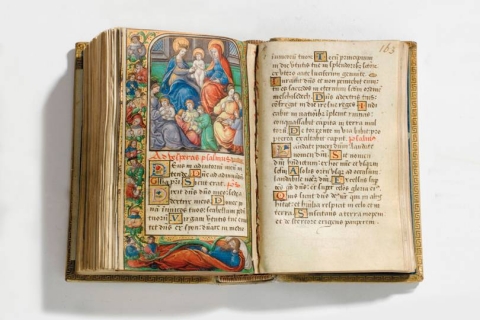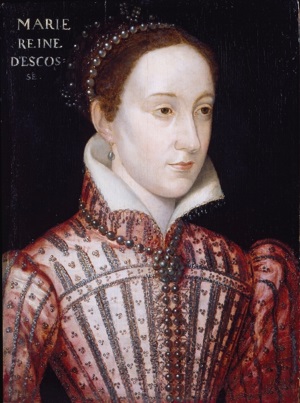Mary Queen of Scots' prayer book goes up for sale

An ornate prayer book that once belonged to Mary Stuart (Mary Queen of Scots) is to be auctioned at Christie’s in London in July of this year. The manuscript contains 40 exquisite paintings. It also includes a short verse written by Mary in French to her great-aunt and includes her monogram and motto. The prayer book was made for Mary’s great-aunt, Louise de Bourbon-Vendôme. She was Abbess of the The Royal Abbey of Our Lady of Fontevraud in the 1530s. It is believed that she gave it to Mary around the time of the reign of Mary’s first husband, King Francis II of France. His reign was short and he ruled from 1559 until the time of his death in 1560. It is then thought that Mary took the book to Scotland with her when she returned there in August 1561.
Born in Linlithgow Palace on 8th December 1542, Mary Stuart was the daughter of James V of Scotland and Mary of Guise. James V (10 April 1512 – 14 December 1542) was the son of King James IV of Scotland and Queen Margaret Tudor, a daughter of Henry VII of England. Mary of Guise was French and the eldest daughter of Claude of Lorraine the Duke of Guise. Six days after the birth of Mary Stuart her father died and she became Queen of Scotland. Her mother was chosen as regent to rule on her daughter’s behalf, and Mary was sent to France in 1548 where she lived as part of the French royal family.
In April 1558, Mary married the heir to the French throne Francis. In July 1559 Francis succeeded his father becoming King Francis II and Mary became Queen of France as well as of Scotland. This uniting of the French and Scottish crowns caused considerable concern to England. In December 1560 Mary's husband Francis II died after a reign of just 17 months. Mary decided to return to Scotland at the age of 18. She reigned over Scotland from at 14 December 1542 – 24 July 1567. On 24th July 1567 she was forced to abdicate in favour of her one year old son who became King James VI of Scotland.
She unsuccessfully sought to regain her throne and in 1568 sought exile in England which was under the rule of her cousin Queen Elizabeth I. Mary was never to return to Scotland and spent the rest of her life in captivity in England. This was a time of religious turmoil. Over this period a number of Catholics seeking the demise of the Protestant Queen Elizabeth saw Catholic Mary as a legitimate alternative monarch. Mary Stuart was the granddaughter of Margaret Tudor who was the sister of Henry VIII and Elizabeth's father.
The end came for Mary when she was implicated in the 1586 Babington plot to assassinate Elizabeth. This plot was uncovered by Sir Francis Walsingham (c. 1532 – 6 April 1590) who was principal secretary to Queen Elizabeth I. He used it as an opportunity to entrap Mary for the purpose of removing her as a claimant to the English throne. Mary was executed at Fotheringhay Castle on 8th February 1587 when Mary was aged 44. Mary was initially buried at Peterborough Cathedral. When Elizabeth I died in 1603 without issue Mary’s son, James, ascended the English throne. In 1612, James arranged to have his mother’s remains re-interred in a chapel opposite the tomb of Elizabeth I at Westminster Abbey.






